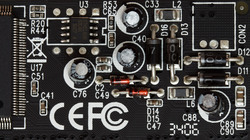Open Hardware: Raspberry Pi, ESP, and More
-
Tom's Hardware ☛ Raspberry Pi Zero drives robotic car using voice commands
The code for the speech recognition software was written in Python. We get a look at the code in the video, along with test drives of the car. If you want to see this Raspberry Pi project in action, check out the official video shared on YouTube, and be sure to follow Robotcus for more cool creations as well as any future updates on this one.
-
[Old] Raspberry Pi ☛ Cooling a Raspberry Pi Device [PDF]
The first question to ask when deciding on a cooling solution is whether any extra cooling is actually needed. The vast majority of Raspberry Pi devices have no extra cooling added, and rely entirely on the internal DVFS and thermal throttling to keep temperatures within the working range. But, if you are running high and persistent workloads, or are in a high ambient temperature, then there may be some benefit to adding extra cooling.
There are some things that can be done to improve cooling before adding extra hardware like heatsinks or fans.
-
Tom's Hardware ☛ Raspberry Pi Pico powers digital audio looper
Thankfully, there are a lot of juicy details about the project and what went into making it. The team explains on the official project page that the Pico utilizes FRAM for accessing and storing tracks. To boost signal strength for the instruments, they developed an amp circuit suited to the ADC on the Pico. As they put it, it’s set up with “loop station logic,” which means they created a finite state machine (FSM) with buttons that handle the recording, loop playback, and more.
-
Tom's Hardware ☛ Vapor coating lets Raspberry Pi run under water without slimy or sticky feeling
HZO uses a process called chemical vapor deposition (CVP) to apply a coating of Parylene, a polymer, to electronics. According to HZO's website, electronic components are placed in a deposition chamber. Then a precursor solid material is heated until it becomes a gas and then heated even more until it turns into reactive monomers. The monomers land on the electronics, connecting to each other and forming a polymer film that's 2 to 25 microns thick.
-
[Old] Random Nerd Tutorials ☛ ESP8266 Wi-Fi Button – DIY Amazon Dash Button Clone
Since the ESP boards are so inexpensive, we can make a similar project that works like the Dash button, but with our own twist.
Instead of ordering a product we can turn on a light, toggle a lamp, send a value, trigger an email notification and much more, as you’re going to see by the end of this project.

